Of all the weapons that have made an impact over the last five years, at least among civilians, the Ruger Precision Rifle has arguably done the most. That is a bold statement, but you would be hard pressed to find a rifle that has carried more water. If nothing else, look at the competitors it has spawned: Ruger led the charge into affordable chassis, now followed by Remington, Tikka, Savage, and a dozen others. The Ruger Precision Rifle, or RPR, you could say has taken the precision market by Sturm.
It wasn’t that long ago that what we would term precision rifles had an entry price of around $4,000, and it went up steeply the second you asked for leather seats. If you wanted to compete playing long range, you needed either a trust fund or a sponsorship from Uncle Sugar, which might include a steep price tag if you weren’t in the AMU. Ruger took a look at the problem and decided to flip the tables.
You can almost see the conversation happening, and I would argue this is right after the entire design team for previous projects was purged.
Engineer 1: “What if, we made a rifle that would compete with the best in class?”
Executive/Bean Counter: “Only if it is priced below $2,000.”
Engineer 2: “I guess we will be done by lunch, what else you got?”
Executive/Bean Counter: “It needs to have a folding stock and feed from a commonly available magazine. I don’t know what those things mean, but focus groups say people want them.”
Engineer 1: “Hold my beer. Yo, Beancounter. Side bet: we get this done, loser scrubs the toilets in the others’ department for a year.”
And they did. The RPR was an instant hit, available in short action for 308, 6.5 Creedmoor, and 6mm Creedmoor. It can hang at a PRS match and is fantastic as a tactical rifle. Several people I know have turned the RPR into a one gun, all-purpose hunting and competition hybrid. The rifle has proven very accurate, durable, and popular.
It should come as no surprise then, that after Ruger took everyone’s lunch money in short actions, they would look further afield. And today, that dream is a reality for those holding out for a magnum. I think we all saw a 300 Win Mag coming. The surprise move was jumping in at 338 Lapua to boot. And that is what showed up at my FFL last week.
I actually thought my editor was kidding when he said 338. Going from Creedmoor to super magnum is a crazy step. I also had no idea what to expect, as I had only been told “Ruger, 338 Lapua.” When the box opened and I was staring at an overgrown RPR, I didn’t actually quite know what to think.
And the 338 is exactly that. It looks like someone stuck a normal sized gun in a machine and stretched its dimensions 30%. The absolutely monstrous muzzle brake is the only give away…and a noticeable increase in weight when you pick it up to record the serial number.
So, a quick rundown of the features that stay the same as the short action RPR is in order, then we can get to the changes for the caliber. The trigger is the same—called the Ruger Marksman. It is an excellent trigger, user-adjustable from 5 pounds to 2.25. No disassembly is required, an included Allen key slips through hole in the action to do the job. The Allen key is actually stashed in the bolt shroud, which is pretty cool. The trigger has a center blade, which I did not find at all a problem in use.
The folding buttstock is the same as the RPR, and a definite bonus at this price level, for either size of gun. While said buttstock will not win any beauty contests, it is extremely functional, and I can find no reason to dislike it. Considering all the whiz-bang stuff it does, you would be lucky to replicate it on a rifle costing twice as much. Length of pull and comb height are adjustable without tools, and some minor Allen key work also lets you adjust the cant of the butt pad. The bottom of the buttstock has a length of Picatinny rail for accessories and a QD sling cup. If you don’t like it, it can be replaced with an AR-style stock. Good luck finding a better solution.
The bolt is a 3 lug design, with a 70-degree throw. It runs remarkably smooth, which actually kind of surprised me. At this price, I expect some grit. I have seen smoother, but you would have to have them side by side to notice. Without getting too far into performance, something else needs to be addressed. I have shot a lot of cheap 338 and 50 caliber rifles and they have a common problem. (Don’t get your panties in a bunch, I’m not calling the RPR cheap. But it is inexpensive.) Most of them, after you fire, take some muscle to unlock. Not being an action design expert, I assume that is due to the insane pressure put on the bolt when you fire. The RPR exhibited none of that. Running the bolt with hot Lapua brass in the chamber was just as easy as running it for dry fire. I was actually shocked by that, and it also means you can run this gun FAST. Maybe not a good idea at the ammo price, but you can.
The handguard for the magnums is also different. To start, it is 18 inches long instead of 15 inches long. Not only does this make the rifle look less like it has high waters on, it offers some real benefits. First, it makes a longer pivot point for a bipod. Second, it changes the center of gravity for the rifle, on that same bipod. Basically, that means it is easier to track a target, in my opinion, and easier to load the bipod for shooting. Several 338 rifles I’ve toyed with saved money by having a very short fore end, and I’m not a fan. Using the RPR, I felt it was perfectly balanced in handguard length and barrel length.
The magnums also feature a target style flat base to the handguard, a minor departure from the short actions. If you are ever unfortunate enough to need to shoot your 338 from an improvised supported position, this will make a lot of sense. Not only is that flat base going to offer improved stability, but it is also going to offer increased friction due to a larger surface area in contact. Under recoil, that is your friend.
The barrel length is different for the magnums, which I think we all kind of expected. The short actions feature either 20 or 24-inch barrels, while the new 300 and 338 feature 26 inches. One thing I am not sure of, sitting here in my basement, is how much thicker the 338 barrel is. I don’t actually own an RPR (yet); I’ve always shot my friends’ short actions. The RPR has never had exactly a light profile, but I would call it medium. Even accounting for the larger caliber, the 338 barrel is monstrous. It actually reminds me of an M2 50 caliber barrel. They were not messing around on this one, and for caliber, I can’t fault the choice. Despite the barrel weight, the gun does balance well.
The weight has increased as well for the new models, up from 9.8-10.8 pounds in the short action ( caliber dependent) to 15.2 pounds for the 338. That sounds like a lot, but once again, under recoil, you won’t be mad about it. Despite the heft, I maintain this gun balances extremely well, and that counts.
The last two changes are obvious the moment you look at them. First, is the gigantic muzzle brake. You can see if from outer space, and at first I was prepared not to like it. Then I shot a couple of rounds, and I was really glad I had it. Second is the magazine. The short actions run off double stack SR-25 magazines, which obviously doesn’t work for magnum calibers. So doing the consumer a solid, the new 338 runs off of AI-style magazines, and two are included.
Performance wise, I was blown away by this rifle. First of all, it doesn’t beat you up to shoot it. I have about 200 rounds through my test model this week, which I know means I have a terrible job. But I am none the worse for wear, with nary a bruise to be found. That is actually very abnormal for 338 or 300 Win Mag. Not only does the brake work, but the aforementioned ugly buttstock is actually amazing in use.
I was extremely limited on ammo, which in this caliber is hard to come by for anyone. At $5 to $8 dollars per round, they don’t exactly pass out match grade like candy, doesn’t matter what you’ve done for them lately. So I started the week with 20 rounds of Gold Medal Match, 6 rounds of Hornady ELD match, and a metric ton of American Eagle soft point.
Being fair to Ruger, I grouped all three. And this gun hated the 300 grain Gold Medal. No hit on Federal— sometimes guns just don’t agree with a load. The AE 250 grains did better, averaging .75 MOA. That is respectable, but still not up to the reputation of the RPR name. Deciding to use my only 6 ELD rounds on paper, I split them into two, three round groups. Both of which were under ½ inches, more in line with what the gun is capable of.
Now low on match grade or not, I’m not just shooting paper at 100 and calling it good. Definitely not my style. So I opted to take the AE soft points out to 1200, just to see. This isn’t really fair to the bullet or the rifle, but hear me out.
The AE soft point costs a third of what match grade does, for starters. And soft points are more like a hunting bullet than a “let’s shoot over the horizon” type of bullet. The AE 6.5 Creedmoor open tip is near match grade, but this was a different animal completely.
At 1200 meters, 338 Lapua should be a chip shot. As it stood, I had a little trouble getting on target. Weight and velocity aside, that was just too far for a soft point to fly well. The RPR did amazingly putting lead on steel, but it wasn’t exactly a group you put up on your trophy wall.
But I did learn a lot, and my respect for the RPR in 338 is high. If it will shoot ½ MOA at 100, there is no reason to think it won’t at any range a match bullet will fly. Or that you can call the wind at. Despite the uber-manly caliber, the gun was fun to shoot. The muzzle brake and weight do a great job of taming recoil, I would calculate this one at similar to birdshot in a pump shotgun. Which is saying a lot. For a 338 Lapua caliber rifle, I can’t think of a single better option below $5,000. If you have been waiting to step into the big boy rounds, this is a golden opportunity.
Visit Ruger to learn more about the Ruger Precision Rifle by clicking HERE.


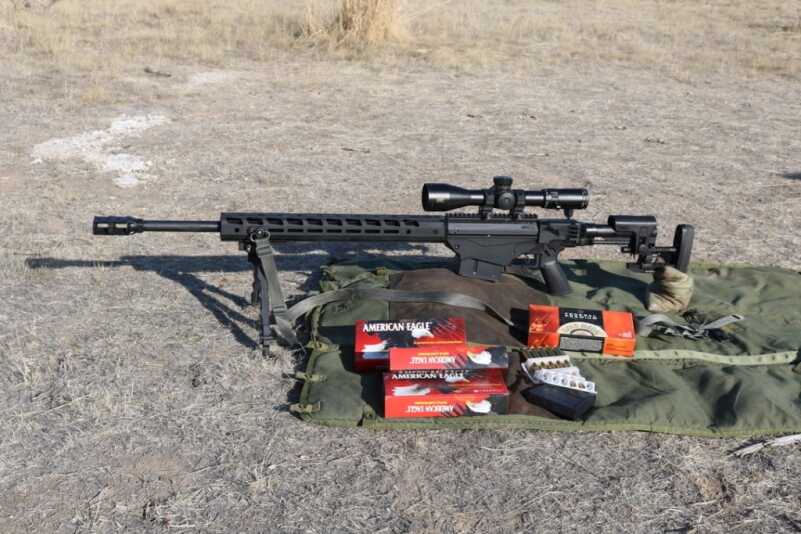
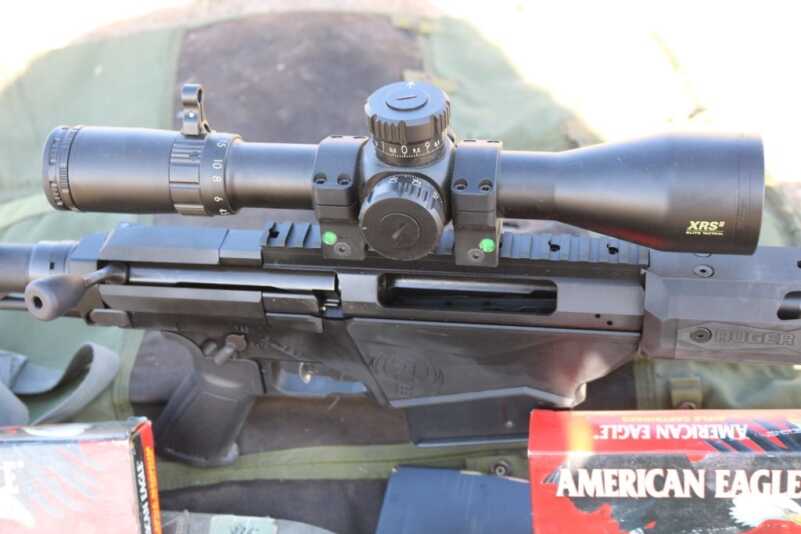
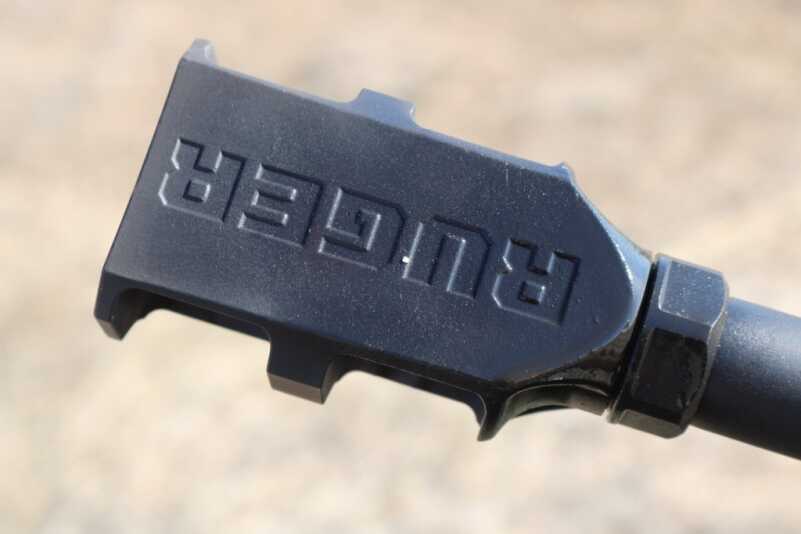
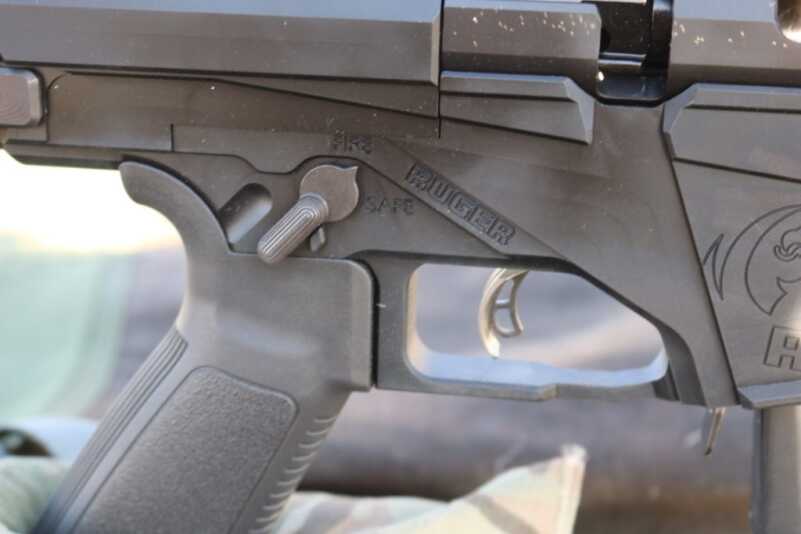
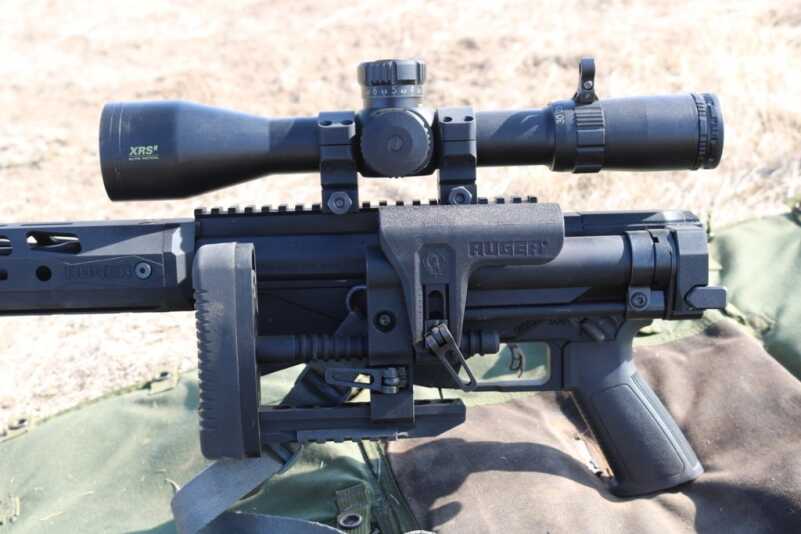


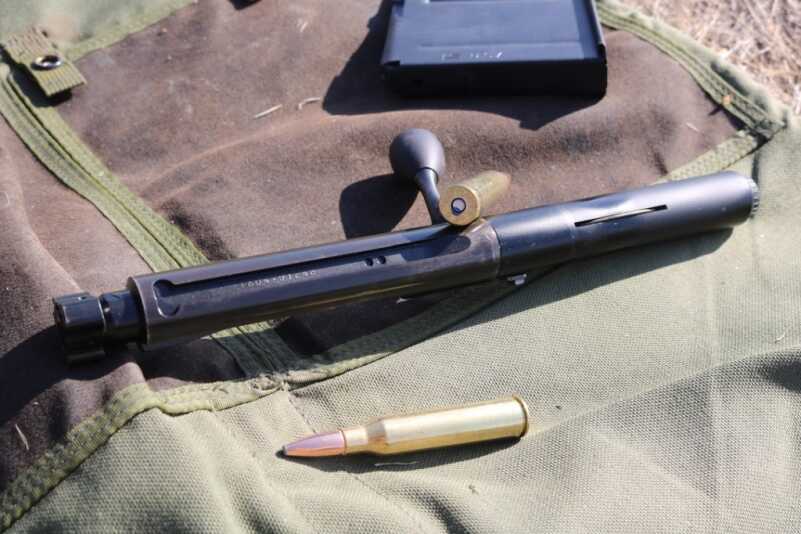
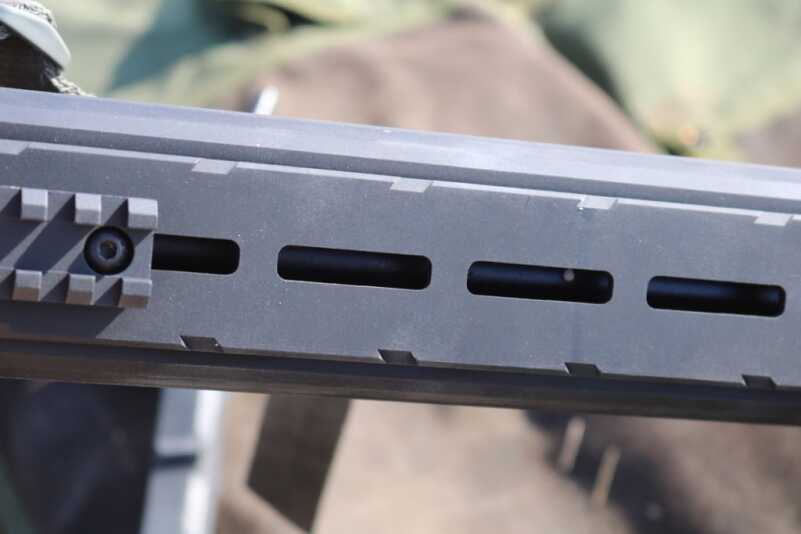
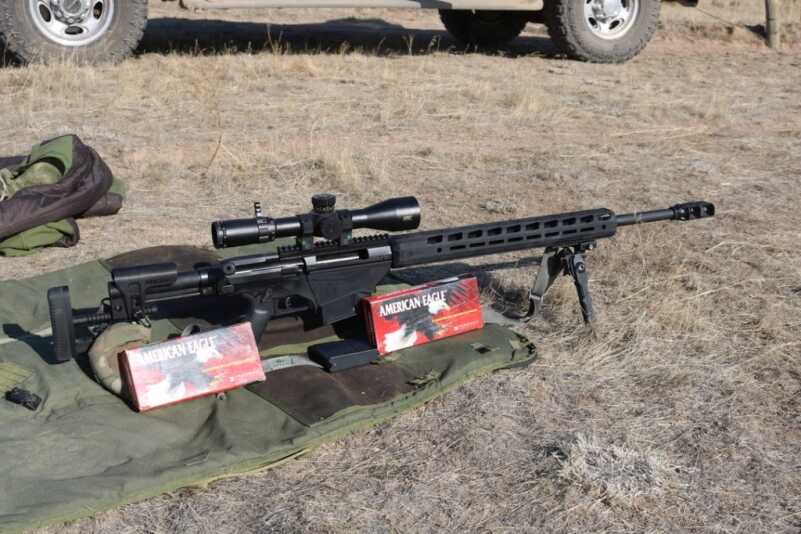
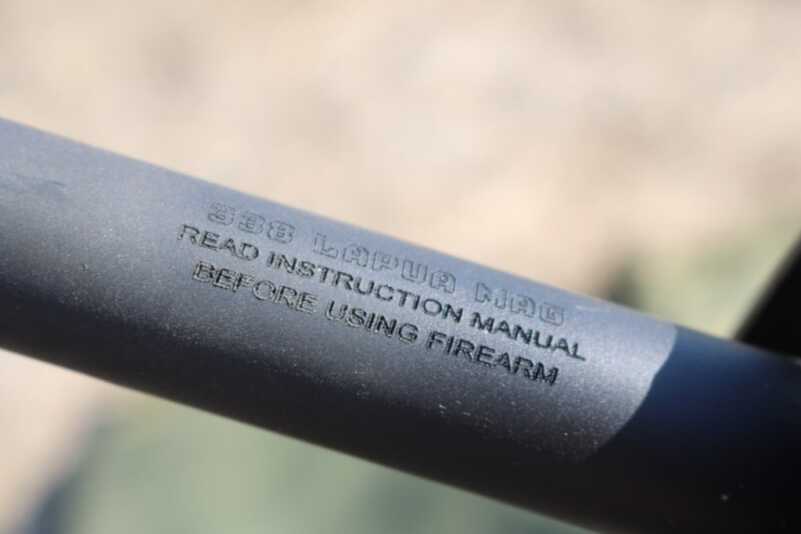
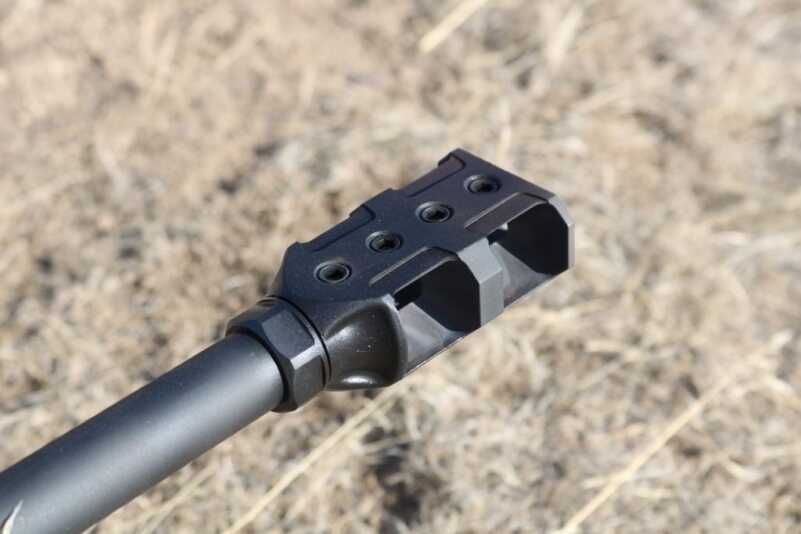
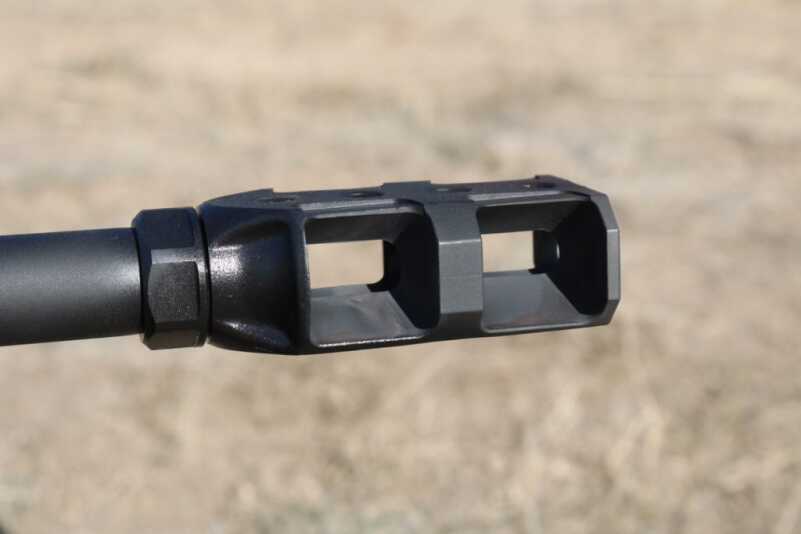
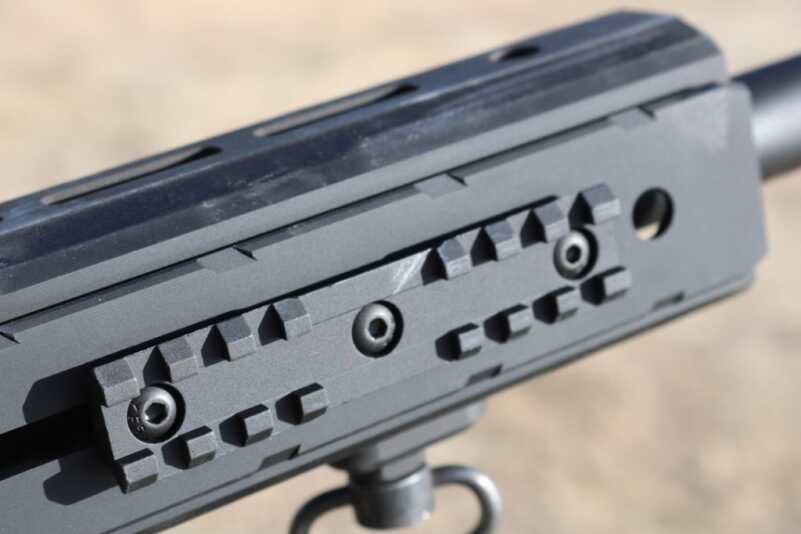



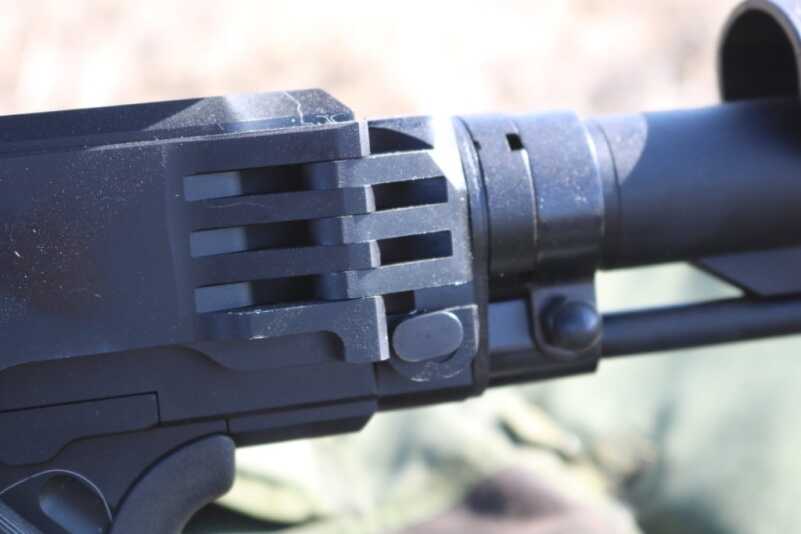
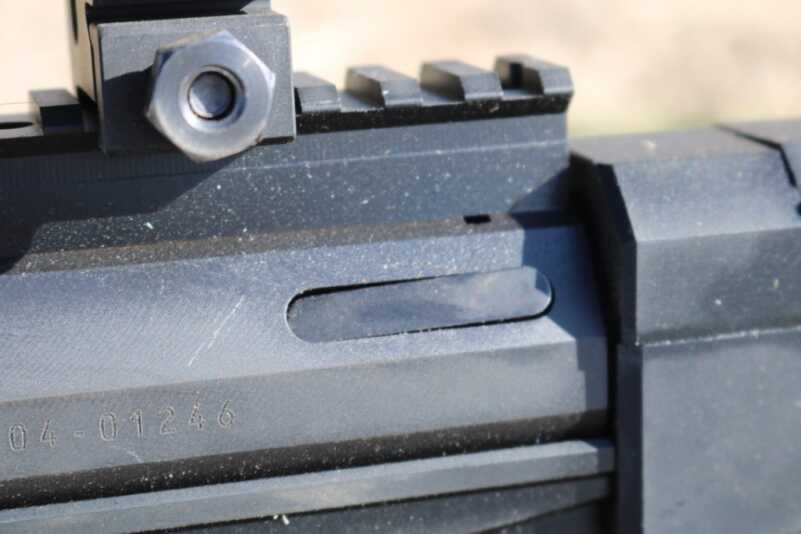


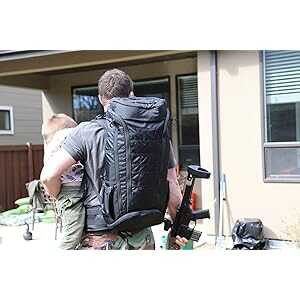
This is all just too cool, however, the expendables for reloading are no longer available on a consistent basis. I buy a RPR in 6.5 Creedmoore, all the needed reloading equipment and now it costs more to reload than buying factory ammo!! Where the Hell are all the primers, bullets, powder and brass? Is it all being hoarded by the people with all the toilet paper? Now the factory ammo is gone from the shelves.
Maybe it is a left wing conspiracy?…….they can’t take all the guns so they take the ammo and the expendables to make it!!! I should have bought a baseball bat….it is a lot lighter and easier to swing!!
I would absolutely love to get this rifle. My wife would even approve it. It’s just the cost odd ammo. 😥
You may want to consider reloading. For a round this large, the retail ammo costs dwarf the costs to reload.
If you were to get an RCBS Rock Chucker Supreme kit ($160), 20 rounds of brass ($45), 100 bullets ($45-$50), powder ($0.36/round) & primers ($.03/primer), Hornady dies ($50), and a brass tumbler ($50), you would break even on retail ammo at around 60 rounds or so. Once you’ve shot enough reloads and the equipment has paid for itself, your cost to reload drops from $5-$8 per round to less than a $1.
Reloading is easy, especially with a single stage Rock Chucker, and online videos will show you how to do it. The price above quotes were pulled off Midway USA. When I reload, Midway USA is my first stop for materials.
I have both a Rock Chucker Supreme single stage kit (RC Kit) and a Hornady multi-stage press. The single stage is best for long cartridges and the RC Kit comes with every tool you need to reload.
Reloading also allows you to custom load your rounds with different bullets and powders to dial in your rifle/ammo combination for optimal accuracy. Powder recipes are online by all the major manufacturers. You can also light load your reloads so you can practice getting used to the rifle, and then have target loads for long range shootings.
The other advantage of reloading is the ability to prepare ammo on short notice. If you have all the components (i.e., bullets, primers, brass, and powder), you can prep ammo the night before for a morning trip with the guys to the range. No need to run to the store and hope they have it.
Just noticed this is a zombie thread…
The mythical 338 Lapua! Gives me that warm fuzzy feeling inside. The cartridge that’s long languished in the shadows of other gobs of others that purport to be uber long distance one hole blow the head off a nat at 1000+ yd cartridges! Guaranteed to auto-amputate a shooter with it’s vicious recoil! Truth is, modern rifles on the market already have tuned down the felt recoil and muzzle flip so that pound-for-pound, and cost for reloading–nothing else in any other cartridge compares in over-all versatility and performance of the 338 Lapua IMO. It is essentially a “poor man’s Cheytac.”
If I recall correctly, Savage had it’s 110 tactical PR in 338 Lapua on the market some 15 to 20 years before this became a twinkle in Ruger’s eye. I’m as big a fan of Ruger as anyone having a large percentage of my gun safe’s content populated by Rugers–but I feel credit is due to Savage as well. And allow me to point out that if you REALLY like the 338 Lapua–you owe it to yourself to wrap your ballistics-loving hands around Savage’s newly upgraded 110 long-range hunter in 338 Lapua. You’ll be glad you did, I promise. My rig, even with a heavy top-tier scope–weighs all-up ready to rock about the same as the bare ruger RPR–though admittedly it’s not going to win at a tacticool fashion show competing with the RPR. And I can’t tell the difference in recoil between iy and a 300 win mag. Actually less if that 300 win mag isn’t compensated.
I’ve had an RPR in 6.5 Creed for a year and a half. Traded a local gun shop that owed me about $700 dollars and a PSA carbine for it new in the box. I put a Sightmark 8.5-25x 50mm with grand slam mounts on it. Took it to my 100 yd range and after getting it on paper my first group using Hornady American gunner ammo was .284 inches. I could not believe it. I spent the rest of the day doing close to the same thing or better with boring repeatability. I’ve never shot anything that went bigger than a half inch.
I remember when the RPR first came out and I called Ruger and asked are you guys going to produce it in 338 Lapua and they stated no and at that time I had a custom built Remington 338 Lapua that matched the same features of the M24 AI that the U.S. Military was using. That weapon cost me $4000 easily for that build and now we have Savage and now Ruger producing rifles in 338 Lapua. I have always been a Ruger fan and I have taken a lot of elk with my M77 in 7mm mag. I now have to swallow hard and think do I want to purchase another Ruger without ending up sleeping on the couch,,LOL. The Lapua is a wonderful cartridge fired from a good rifle is more then capable of one mile shots with the proper marksman behind it. I have turned a lot of friends onto it and once they purchase one and they don’t reload they start reloading real fast. Hats off to Ruger for another great production rifle!
Good review sir. I wished Ruger would come out with a 224 Valkyrie with a 26 inch barrel.
I disagree with chambering a nice rifle like this in .224 Valkyrie. 6.5 x 39 Grendel and 7.62 x 51 are better choices for another caliber for this type of rifle.
The 308 model will shoot your 7.68×51 just fine. Has done so since day one.
Now only if you can build your long range guns for the true left hand shooter. I would buy at least 3 of them in different calibers, I’m sure many others feel the same way. Just think if I’m willing to spend about 8 to 10 grand on your guns and accessories how many other lefties would do the same!
How much exactly for the 338 Lapua? Says $4,000 and then says $5,000. What’s the real price? If they are $4-$5,000 then I’d say that’s at least three grabs too much! If a 6.5 Creedmoor costs $1,000-$1,200 max there’s ZERO reason for the SAME EXACT GUN to be FOUR OR FIVE TIMES THAT PRICE! Yeah the parts a bigger and cost a LITTLE MORE… But NOT FOUR GRAND MORE! The money’s in thr COME BACK! Even stupid dope dealers know that! The folding stocks on ALL these rifles is truly a joke considering no case will hold it being that thick unless you buy a super thick gun case which I’m sure would be fun to carry being so thick and heavy. Not to mention the huge fact the rifle is a paper weight till it’s full opened and locked down so honestly, what’s the point?! Save the BS folding useless option to SAVE US MONEY for those of us that USE our guns and would NEVER have a gun in a position that it has to be BUILT BEFORE USE! My guns are ALL READY TO ROLL ALWAYS! If someone is shooting at you TRUST ME, they will NOT SAY “go ahead and get your stupid folding gun ready and then we can get into a fire fight!” I’m a fan of the RPR but not some if these stupid costly upgrades they we don’t get an option to opt out of like the lame folding stock and the for sure to be heavy as hell butt stock. It’s like they decided to make the most over built and useless gun known to man they really has zero benefits for all those over built parts.
If you read the small table near the bottom, the suggested retail price is $2099.00
Damn!
Slim likes his guns slim too!
😉
If you research the RPR’s you would know the folding stock on all models is necessary so the bolt can be removed. The action is in-line with the butt stock so the bolt can’t be removed with the butt stock in place.
Read article with enjoyment, well done. Have a question: why did you put riflescope mounting rings so close together at center of scope? Is there a reason? Does that give some advantage?
Thank you for article.
That’s the first thing I noticed from the photos! And I have the same question.
There’s clearly more room on the tube and the rail.
So, why are the mounts so close together?
Good review. One caveat: you are a gun writer: in 2018, how can you possibly still be misspelling Creedmoor?
Who cares, How do you know it wasn’t a typo? You guys always have to throw something in there
Please Santa, I promise to be good forever!! Gives AWESOME a whole lot more than ever!
Been a long range shooter for 50 years , last LR gun I had built was a 280 AI by David Tooley in NC . After seeing this I’m making room in my gun vault as I speak !
I would like one in humble old .30-’06.
Curious how the 300g will do at distance. Will it hold with the lighter bullets as distance gets longer?
I have no doubt that that brake does an excellent job taming the recoil–I bought one similar to that made by Khantrol many years ago for my 300 win mag and it shoots like a tame puppy; never a bruise. I especially like using it when the guy next to me at the range is raining down AR or AK brass mercilessly on my position.
I would buy 1 tomorrow in 300 Win mag but I can’t get past the weight 15 + pounds is ridiculous. I think it’s a fantastic rifle thinking out of the box incredible bang-for-the-buck I just wish they could get that weight down.
I’m holding out for the RPR in .50 BMG.
Sweet, it gets a big block, but still nothing for left handed/eyed shooters.
This from a Company who has historically offered lefty bolts.
i shoot from my left shoulder and when shooting from a rest or bi-pod i prefer a right hand bolt.
when working the action, my left hand stays with the grip while my right hand works the action.
that makes it much easier to maintain position and remain on target.
I agree Jim.
As a L.H. dominate eye L.H. shooter, I have never shot a L.H. bolt rifle in my life. Never had to, –my opinion & preferences are same as yours… And that includes many years shooting a R.H. flintlock . Everything is right there in front of you when (however you are) prepping for the next shot…
—- Easy Peasey 😉
-cheers, and Merry Christmas everyone !
Love this shit, its cool and all but browning did it best, create all the rocketships to the futureat 5,000 dollars a piece when I go out and fill the freezer year after year with a 30 06 and 30 30
Well, you can fill your freezer with a .22 and beef cattle…..
This is about a really awesome ability to reach out a 1/2 mile.